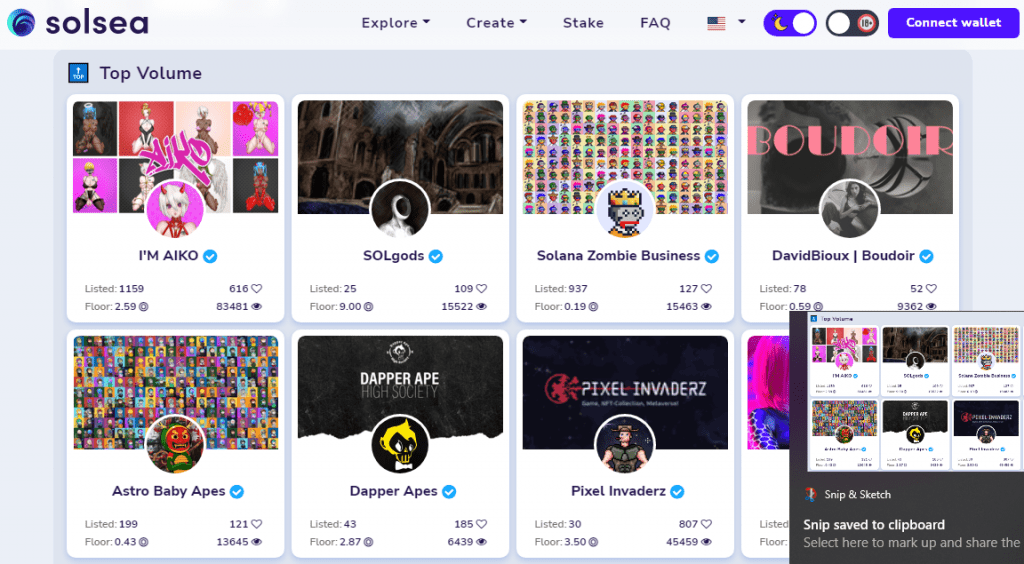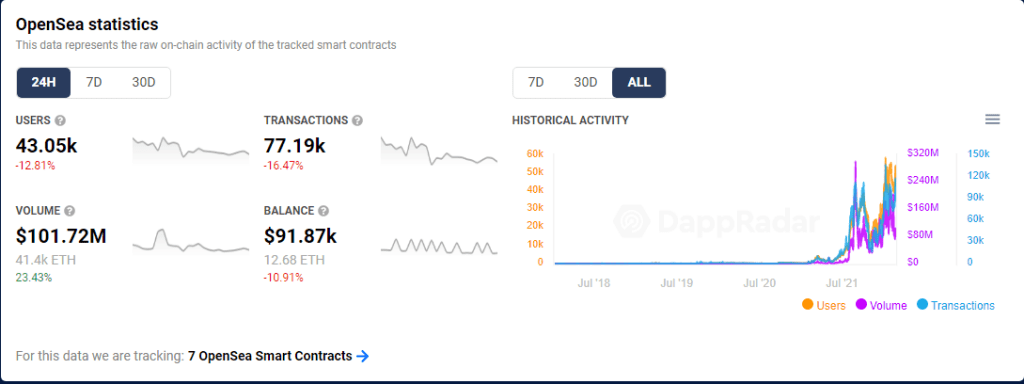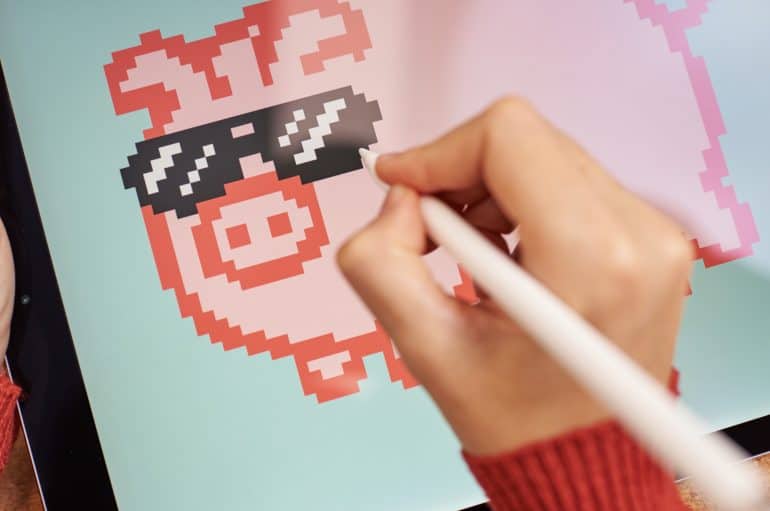While many people are making a fortune, many are still asking, what are NFTs? In this article we’ll be answering all questions like, how do NFTs work and how to invest in NFTs. We will also explore the state of Non-Fungible tokens on blockchain other than Ethereum like Solana, Polygon, Cardano, etc. Therefore, don’t get overwhelmed by all the fancy terms on the internet as we’re here to explain.
Table of contents
NFTs Meaning
Before you start dabbling with these risky assets, it’s better to understand NFT meaning first. NFT is an abbreviation for Non-Fungible Token. As the name suggests, each non-fungible token is unique in itself unlike fungible cryptocurrencies like Bitcoin, Ethereum, Litecoin, etc. So, it acts as a unique digital signature on blockchain that can point towards particular metadata. It can also be associated with digital art, physical art, music, videos, etc. while acting as proof of ownership.
Currently, NFT art is being seamlessly traded across several different marketplaces globally. Apart from art, Non-Fungible crypto technology also allows the ownership of assets in video games, which was previously not possible. One of the best gaming applications of non-fungible tech is the Axie Infinity game. Players who own Axies can trade them for other fungible assets on different marketplaces as they enjoy their full ownership.
How do NFTs Work?
As explained earlier, NFT crypto tokens are unique digital assets that are not interchangeable like fungible tokens. These unique tokens then act as the ownership of other assets including, pieces of art, songs, videos, and real-world assets. Each token points towards a link of metadata that could be storing an image, audio track, or similar data. While NFTs provide the ownership of this metadata, it doesn’t mean that it can’t be copied. Anybody can copy the metadata but the unique address helps in identifying the real owner of the asset.

History
Although some experimental NFTs already existed on other blockchains, it was the ERC-721 standard that put NFTs on the map. ERC-721 standard was first proposed in 2017 and several projects sprung up in the same year. Curio Cards, Crypto Punks, and Rare Pepes are some of the earliest collections in this regard. In 2017, a crypto game called crypto kitties became very popular, allowing ownership of digital pets called kitties.
The standard ERC-721 allowed the transfers of NFTs among different addresses while also making their on-chain tracking much easier. Another token standard called ERC-1155 is also available on Ethereum which allows the creation of semi-fungible and non-fungible tokens. It also makes batch transfers of several tokens from the same collection possible in a single transaction. This makes ERC-1155 much more gas efficient for NFTs that require bulk transfers.
How to Invest in NFTs?
Now that you know what are NFTs, you must still be wondering how to invest in NFTs. Most of the Non-Fungible tokens are traded against cryptocurrencies like Ethereum, Solana, Binance Coin, etc. More and more projects are also allowing purchases in Fiat but the process is not that smooth. If you already have cryptocurrencies and a web 3 wallet, then you may buy non-fungible tokens from online NFT marketplaces. The most famous marketplaces are Opensea, Rarible, Solsea, Solart, CNFT, etc. If you’re a beginner then you may invest by taking the following steps.
- Download Metamask Web 3.0 wallet.
- Create a new Metamask wallet and back up the seed phrase.
- Transfer Ethereum (Eth) from centralized exchanges like Coinbase, Binance, Kucoin, etc. to your Metamask address.
- Now you may buy any NFT listed in Eth from several NFT marketplaces.
Solana NFTs
As described earlier, ERC-721 and ERC-1155 token standards on Ethereum played a pivotal role in bringing NFTs to the mainstream. The success of Non-Fungible tokens on Ethereum also made all other smart contract platforms incorporate this technology. Solana was one such blockchain that enabled low-cost minting and transfers. Solana NFTs are also thriving and the trading volume is constantly increasing. Solsea and Solart are the biggest marketplaces on Solana. Both of these platforms require a Solana web 3.0 wallet to interact with them. Users can buy, sell and mint on such marketplaces with very little gas fees. Solart and Solsea both charge a 3% fee for every transaction.

Activity on Cardano
One other smart contract platform which is also boasting a huge Non-Fungible tokens activity is Cardano. NFT trading volumes on Charles Hoskinson’s platform are constantly rising across multiple marketplaces. CNFT was the first-ever NFT marketplace. It was launched in July 2021. Currently, it supports the buying and selling of while the mint feature is also coming soon. However, the biggest Non-Fungible Tokens’ platform on Cardano is Galaxy of Art which also allows minting. Cardano NFTs are still in the nascent stage but the user activity could explode when more Dapps go live.
NFTs Crypto and Their Applications
Currently, the NFT art collections are the most popular application. Most of the projects in this niche are avatar collections with each collection consisting of around 10,000 unique tokens. Other applications include gaming, music, Event Tickets, etc. Massive crypto metaverse projects like Sandbox and Decentraland are also selling their lands as NFTs. Another major application is tokenizing real estate. Several startups are striving to increase adoption by developing products in these niches.
Are They a Good Investment?
If you have some capital to invest then you must be googling ‘are NFTs a good investment?’. The answer to this question depends on multiple factors and may vary for different investors. Even before this question, one must learn ‘what are NFTs’, first. One must keep in mind that just like other crypto assets, Non-Fungible Tokens are very volatile. Several new projects launch each day. While many of these collections give 10x returns, many also end up going below their mint price. Therefore, rigorous market research must be done before buying any NFT from the marketplace or minting a new one. Just like other risky assets, one must only invest what they’re willing to lose.
Where to Buy NFTs?
If you’re wondering where to buy NFTs, then the biggest platform in the world is Opensea. Opensea currently supports buying, selling, and minting on Ethereum, Polygon, and Klayton blockchains. Opensea boasts a daily trading volume of more than $100 million as per Dapp Radar. In December 2021, the monthly trading volume on Opensea surpassed an eye-popping figure of $3 billion. This increase in volume is due to the insane amount of hype on social media. Several celebrities like Eminem, Justin Bieber, Jimmy Fallon, and Paris Hilton have already jumped on the bandwagon. Such celebrity endorsements have further increased mainstream interest.

As is the case with all other Dapps, a web 3.0 wallet is required to interact with Opensea. Metamask, Coinbase, Wallet Connect, and Fortmatic are the most popular web wallets in this regard. If one has a good understanding of what are NFTs, creating a metamask wallet could be a good step.

